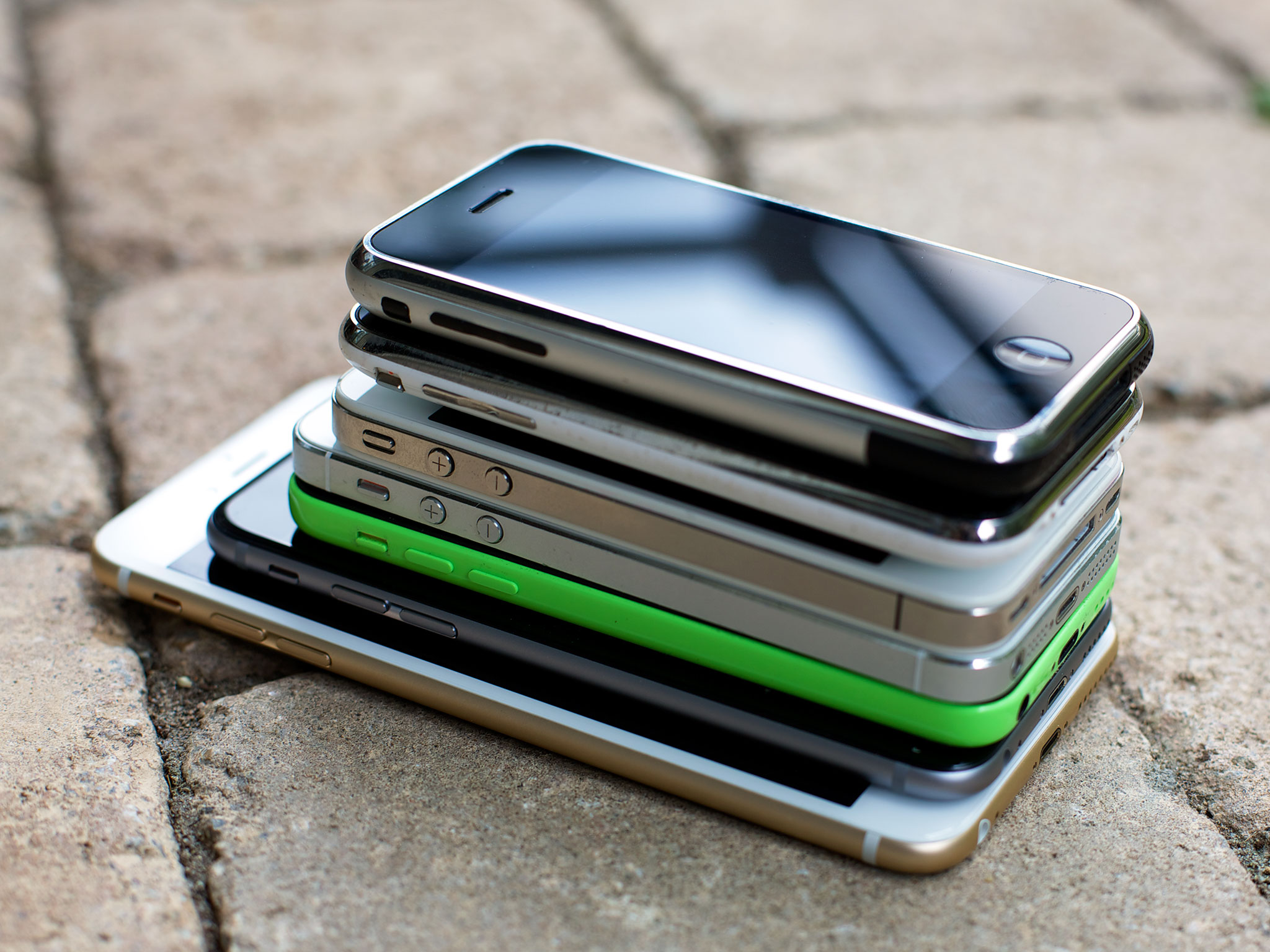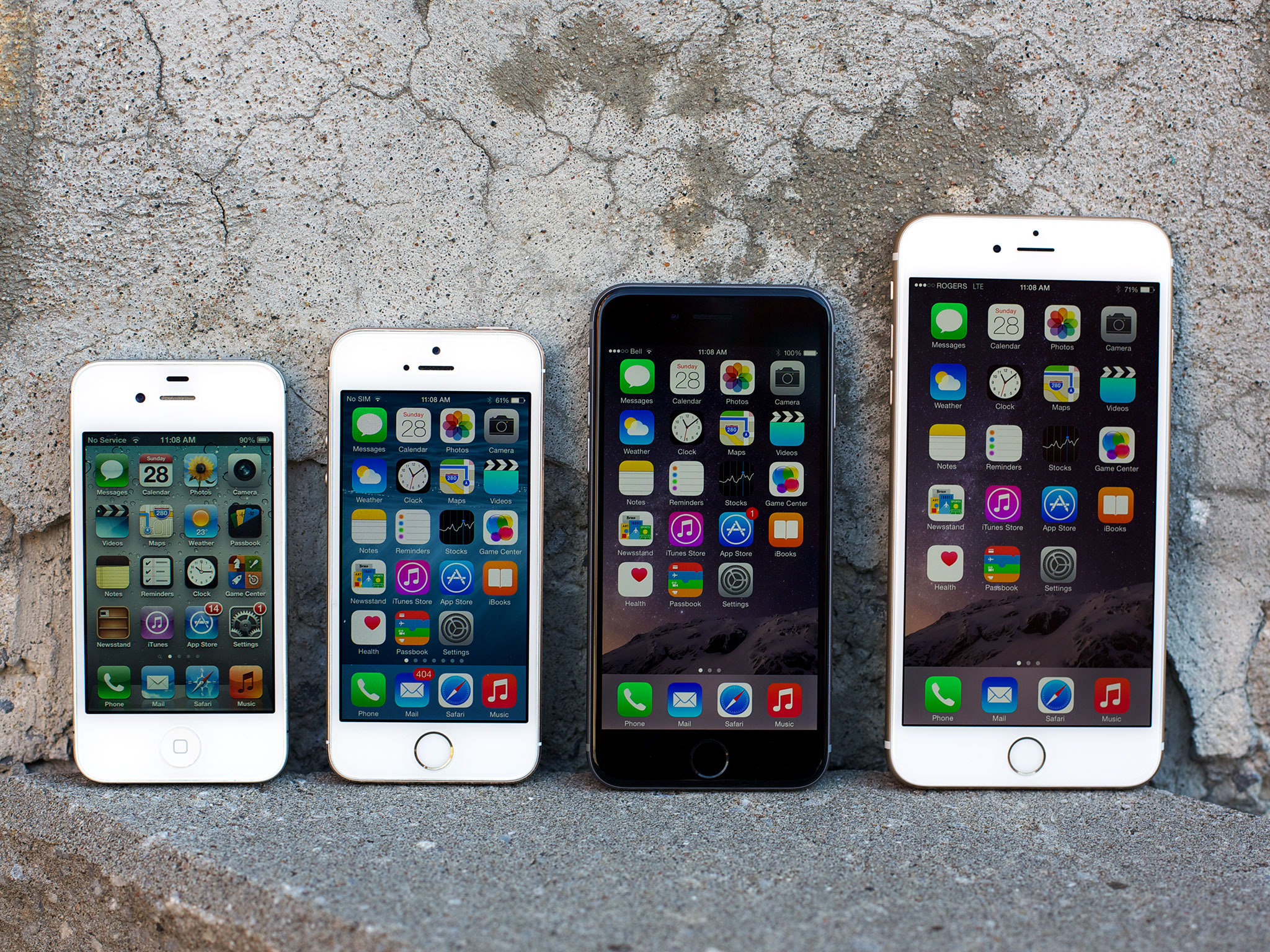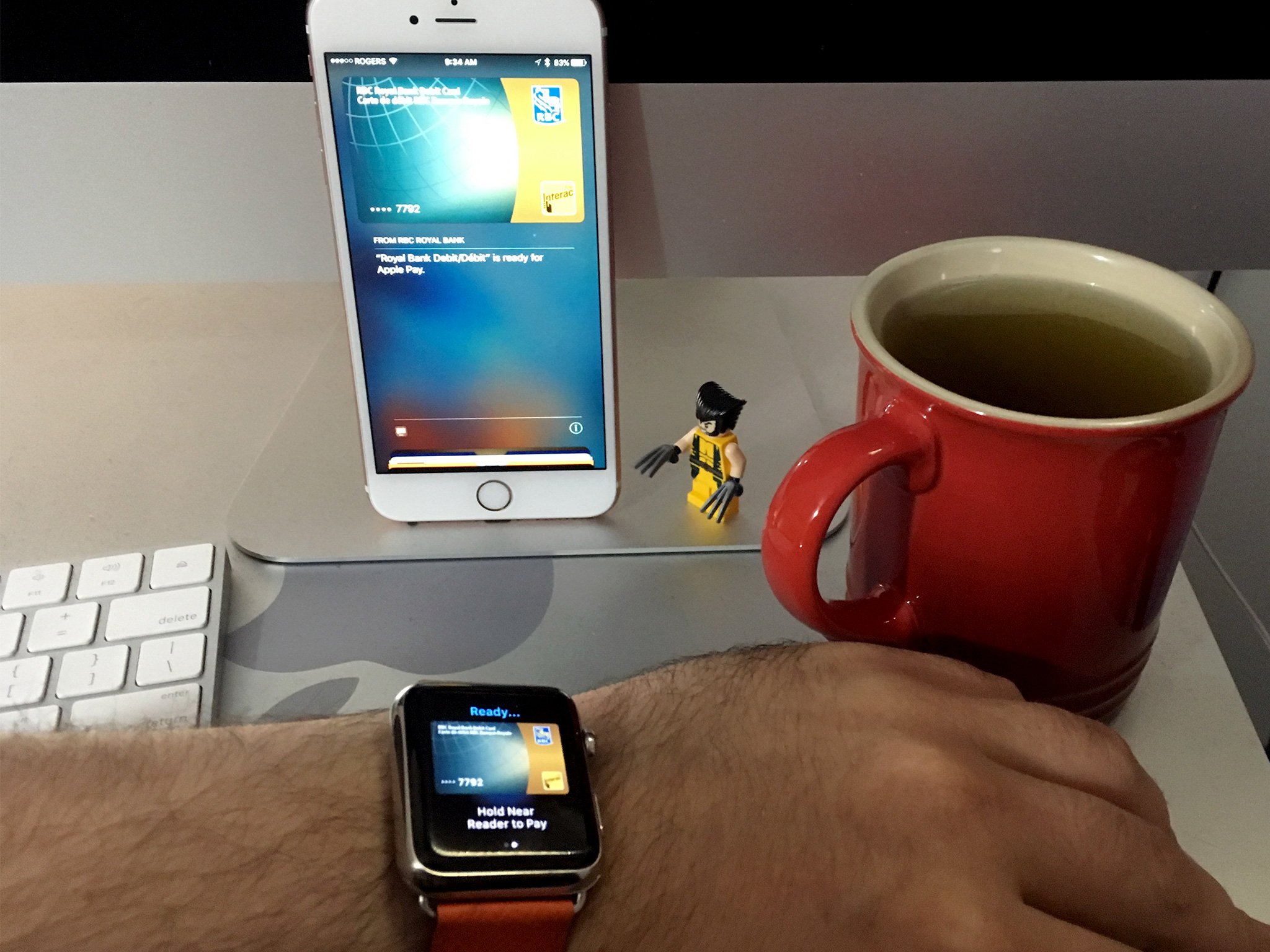Tick-tock... tock?!—The future of iPhone product cycles

Time was you'd get something new, then a better version of it, then something new again. You could count on it, like the tick-tock of some great clock. And you could plan for it—getting every one of them if you wanted to, or alternating between just the new or just the improved, depending on what you felt was the best strategy. But now it's all being burned down. Instead of tick-tock we're faced with the ultimate horror: Rumors of a tick-tock... TOCK.
I'm talking, of course, about Intel and how, after decades of die shrinks followed by architectural improvements, for the first time the company will be following the former with two of the latter. Broadwell. Skylake. Kaby Lake. And we'll have to wait until after that for the next die shrink. The. Worst.
No, wait, I'm actually talking about Apple and how, after almost a decade of new designs followed by new internals, for the first time the company is rumored to be following the former with two of the latter. iPhone 6. iPhone 6s. iPhone 7 or iPhone 6se (or whatever it may be called). And we'll have to wait until after that for the next redesign.
The. Worst.
Why would Apple do this? It flies in the face of the general internet armchair wisdom that the company needs to combat saturation and the general malaise of smartphone modernity not by adding tocks but by removing them — by fielding new design not every second year (much less third) year, but every year.
Donut shaped this year, triangular the next!

For the last few years Apple has been following newly numbered design tick updates with S-variant, feature-enhanced tocks. It started in 2009 with iPhone 3GS and continued through last year's iPhone 6s. To sort-of solve for the lack of design changes in the tock years, the company has added whiz-bang new features, like Siri, Touch ID, and most recently, 3D Touch. More superficially—and hence likely more effectively—Apple has also used the tock years to introduce new finishes, including gold with iPhone 5s and rose gold with iPhone 6s.
That way, even if you have the same design as before, you can make damn sure that the color still shows everyone you have the newer version.
Master your iPhone in minutes
iMore offers spot-on advice and guidance from our team of experts, with decades of Apple device experience to lean on. Learn more with iMore!
For some, though, it's not enough. For some, even the tick changes are not enough. I wrote about the sentiment in 2012—and, in doing so, got to use one of my favorite titles ever.
Back then people were up in arms about the iPhone 5 looking too much like the iPhone 4 and iPhone 4s. Forget the then-new 4-inch, 16:9 display and the then-new chamfered edges, it was still a rounded rectangle, Apple had clearly lost its ability to innovate, and you know the rest: Apple went out of business. Wait, no, Apple posted record sales and this year returned to a version of that very same design—now beloved and referred to as "iconic"—for the internally-upgraded iPhone SE.
2016 is different from 2012, though. Then, Verizon had just launched the year before and Sprint and T-Mobile were following suit. NTT DoCoMo and China Mobile were still on the horizon. And the even big and bigger iPhones were still two years away. In other words, there was significant growth ahead for the iPhone.
That's in sharp contrast to today, where the iPhone rollout is effectively complete across carriers and regions, and a range of display sizes are all on the market and up to date. China is also showing signs of being more protectionist, and the iPhone less in demand, than anticipated. India hasn't let older iPhones in and newer ones haven't been priced to move. And, globally, what happened to the PC industry is happening to phones—for most people, most of the time, what they currently own is proving good enough that momentum might be swinging away from faster and towards slower upgrade cycles.
All of that hurts iPhone and, since iPhone is Apple's biggest business, hurts Apple. It puts the company under enormous pressure from shareholders, analysts, and media alike.
Hence, the narrative that Apple needs to abandon the tock, ditch the S, and switch to annual redesign. That it needs to embrace change for change's sake—something that many of us who've watched Apple for a long time have previously said would be the real sign that the company was becoming reactionary and getting into real trouble.
Apple could, after all, make a triangular or donut shaped smartphone to win back the coveted analyst and media "innovative" award. Hell, BlackBerry made a Pop-Tart-shaped one and that certainly did the trick. Except many of the same people currently criticizing the lack of design innovation would be first in line to mock it and last in line to cover the bills when it failed. Hard.
Form phone

Rather than a death of innovation in smartphones, what we're witnessing is a maturing of the market. Much like luxury watches don't change design much from one year to the next, or luxury cars, high-end television sets, or pretty much any other established consumer product, smartphones have reached a point where they're now optimal for the tasks literally in-hand.
There could come a time—and indeed perhaps will—when iPhone becomes more fashion-centric. Like Apple Watch bands, we could eventually see seasonal colors, textures, and materials. Given how much I've spent on bands over the last year, I both desire and fear such times, but it would certainly change the attraction game.
What truly matters about iPhone won't ever be dictated by fashion, though. It will, as always, be dictated by technology. Just like Apple doesn't ship chipsets but feature sets, they won't ship technologies until those technologies can be shipped at a level the company believes in. That goes for edge-to-edge displays, virtualized home buttons, and other things I mentioned way back in January of 2015.
Deleting the S—burning down the tock—won't and can't actually make the future come faster. Calling iPhone 5s the iPhone 6 wouldn't have made Apple Pay ready to launch a year earlier, and calling iPhone 6s the iPhone 7 wouldn't have given it an A10 chipset or made this year's camera ship last year.
It also wouldn't affect any of the features many of the same people say Apple has to ship, including better waterproofing, wireless charging, USB-C, quantum dot, and the list goes on. It would simply mean more work for the industrial design team in coming up with new looks for new look's sake, and for every team from chipsets to cameras who could no longer count on a steady target for those S-years, and so risk having their own, currently staggering level of innovation harmed rather than helped.
The next narrative

Intel won't ship a die shrink after Skylake not because the company is a jerk that can't innovate any more, but because the next die shrink is f--cking hard and will take until after Skylake to be ready. Likewise, if Apple doesn't make significant design changes in 2016 it won't be because the company is stupid or doomed, but because the design changes coming next are f--cking hard and will take another year.
Human beings are exactly superficial enough that cosmetic changes can drive more sales than feature enhancements. Glowing Apple logos or metallic purple finishes could well make a tear-drop shaped iPhone fly off the shelves. But those types of gimmicks run even dryer faster. iPhone 12, now a trapezoid in metallic taupe!
I think Apple's job is actually going to be much harder than that.
The days of iPhone finding massive new markets to conquer are, absent life being discovered on Mars, over. Changing designs may, for a while, inflate sales and upgrades for a portion of consumers, but even that would only last so long.
What Apple really needs to do is figure out and effectively communicate a new narrative around iPhone. My hope is that, now that iPhone has been successfully built up as a platform, Apple can use it as a platform to quickly build up everything that comes next.
That will include new products like Apple Watch and Apple TV, but it will also include new services like HomeKit and Apple Pay, but more importantly it will require a new strategy that tells that story in a compelling way. Something that makes consumers see the potential of everything post-iPhone—everything that makes iPhone itself even more valuable.
And, by the same extension, Apple.

Rene Ritchie is one of the most respected Apple analysts in the business, reaching a combined audience of over 40 million readers a month. His YouTube channel, Vector, has over 90 thousand subscribers and 14 million views and his podcasts, including Debug, have been downloaded over 20 million times. He also regularly co-hosts MacBreak Weekly for the TWiT network and co-hosted CES Live! and Talk Mobile. Based in Montreal, Rene is a former director of product marketing, web developer, and graphic designer. He's authored several books and appeared on numerous television and radio segments to discuss Apple and the technology industry. When not working, he likes to cook, grapple, and spend time with his friends and family.
